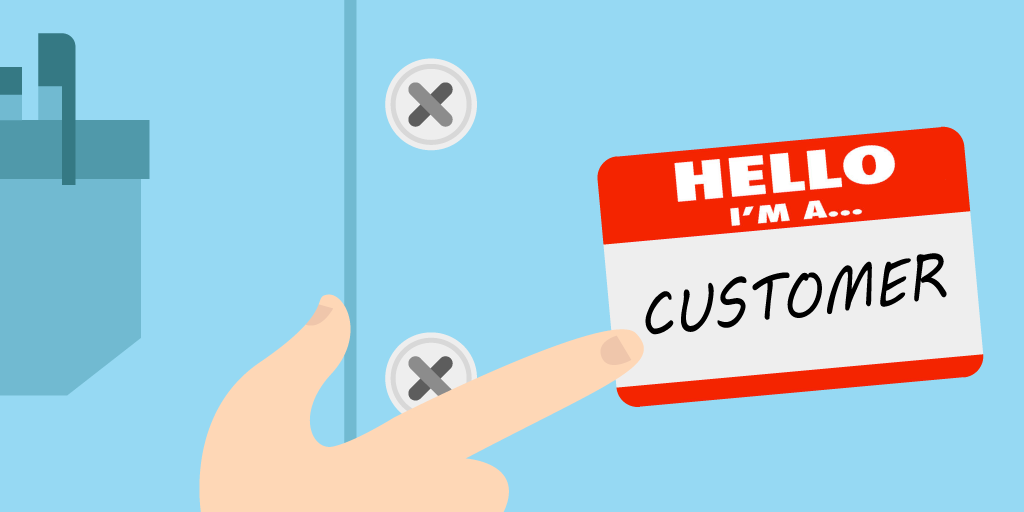Most of today’s businesses offer the same low prices to customers. Meanwhile, digital companies remove the process of driving to the store. What’s left to distinguish these companies from each other?
Short answer: Customer service.
American Express found that 91% of customers judge whether or not to shop with a business based on the company’s customer service.
How can you make sure the customer service your business offers stands out? Easy.
There is a customer service skills list that you want your entire company to embody. These are the skills you’ll want to look for on a resume when hiring employees. So let’s dive in and check off what we want to see on a customer service resume example.
1. Patience of a Saint

At the very top of the customer service experience hierarchy is patience. “Patience is a virtue” is a proverbial phrase dating back to the fifth century, and it’s still said today because it’s so true.
Especially in customer service.
73% of customers who were dissatisfied with a business cite “rushed” service as the reason they stopped shopping with a company. If only the employee they worked with had the customer service skills training that prioritized patience.
Patience is more of an attitude than a personality trait. A kind of mentality adopted for approaching a situation. And it’s a mentality that’s key for navigating customer’s questions.
In an interview, American entrepreneur Derek Sivers said:
"I used to request all my employees to intentionally take a little longer on customers calls… Imagine how powerful it is for a customer to know that he is listening to somebody who…. gets him, than something like, Thank you customer 4325. How may I quickly handle your problem?"
Patience, or taking your time, with customers shows a degree of care and understanding. As the Roman playwright Plautus wrote, “Patience is the best remedy for every trouble.”
Another helpful maxim to summarize patience is, “Don’t sweat the small stuff”. Customer representatives who understand the aforementioned will deliver superior service.
So, when you’re looking at a resume with customer service skills training for a potential employee, be sure to look for “patience.”
2. Adaptive as a Chameleon

Whenever any work involves people it’s bound to be unpredictable. Afterall, people tend to be spontaneous, and that means no two interactions with customers will be alike.
Which is why the next skill we want to see on our customer service resume example is “Adaptable.” That means meeting a customer’s unique needs.
Over 70% of customers not only want but expect an experience catered to them when they’re shopping.
Businesses providing a better-adapted customer experience perform 14% better than competitors in their niche. Which is exactly why adaptability is paramount for the customer service experience.
We can call this the skill to “read” customers. But really it’s just about paying attention, adapting yourself to the individual needs and expectations of the customer.
Business writer Tom Peters wrote, “The simple act of paying positive attention to people has a great deal to do with productivity.” In other words, true adaptability is seeing customer service as a conversation.
This also means employees need to understand their own limitations; they don’t need to be adaptable to every instance. They need to know who they can turn to — and when — in order to get the customer they help they need; whether it be a manager or perhaps another employee who is more familiar with the issue.
3. Empathy for Others

Empathy is understanding another person’s experience. Or, as the saying goes, empathy is “walking a mile in someone else’s shoes.” And it’s key for customer service.
73% of surveyed customers reported that what lead them to fall in love with a brand was friendly employees or customer service representatives. These are brands that understand how to empathize with their customers, to see the shopping experience through the customer’s eyes.
The idea is to treat customers as people, not as a means to a sale. The former is dehumanizing. And not a healthy way to approach any interaction with people.
Empathizing With a Name
Using customer’s names is one of the easiest, and most powerful, ways to empathize with customers. Researcher Tracy Rank-Christman reports how important a name is:
"We found that offering consumers personalized service can result in the customers’ positive, “approach” behavior toward the product. For instance, in one study, when their correct name was used it increased the likelihood that the customer may buy again in the future."
We use each other’s names because in doing so we recognize that other people are alive, with their own hopes and dreams, worries and problems. That might sound too philosophical, but neuroscience has shown that it’s quite true.
4. Positive Language

Positive language tends to be a natural consequence of not only patience but empathy. But that doesn’t mean employees shouldn’t consciously think about the words they use when communicating with customers.
Harvard Business Review found that it's best to avoid negatively charged words like “don’t,” “can’t,” and “won’t” to significantly reduce customer’s frustrations.
Instead, use a friendly tone, even amidst harsh criticism, and rely on positive words like “absolutely,” “enjoy,” and “definitely.” Doing so puts the customer at ease and creates a friendly, responsive atmosphere.
One way for employees to prime themselves to use positive language is to acknowledge the power of a smile in customer service. Yes, it sounds cheesy, but studies have found that even smiling while talking on the phone changes the tone of our voice.
The point being, the physical act of smiling gives your brain cause to use positive language.
5. Desire for Knowledge

No business should want employees who are content with their current knowledge of themselves and their world.
After all, no matter what we do there is an opportunity for learning. And customer service is constantly evolving thanks to the introduction of technologies such as queue management systems, e.g. Qminder.
Employees who are hungry to learn are also the ones who will naturally develop all of the skills we’ve discussed in this article. After all, a skill is a kind of knowledge.
Willingness to learn is an attitude that an entire company needs to exude. And people can learn to want to learn. Be sure to add it to your customer service skills training list if it’s not already featured!
A business’ health is no longer measure by the bottom-line but by customer satisfaction. Satisfied customers will keep coming back, tell their friends and family, and increase the bottom-line.
Beyond customer service skills, it’s important to integrate your business with the latest customer service technologies. Speaking of, why not try Qminder for free? Training your staff is that much easier when they're not using outdates systems.






